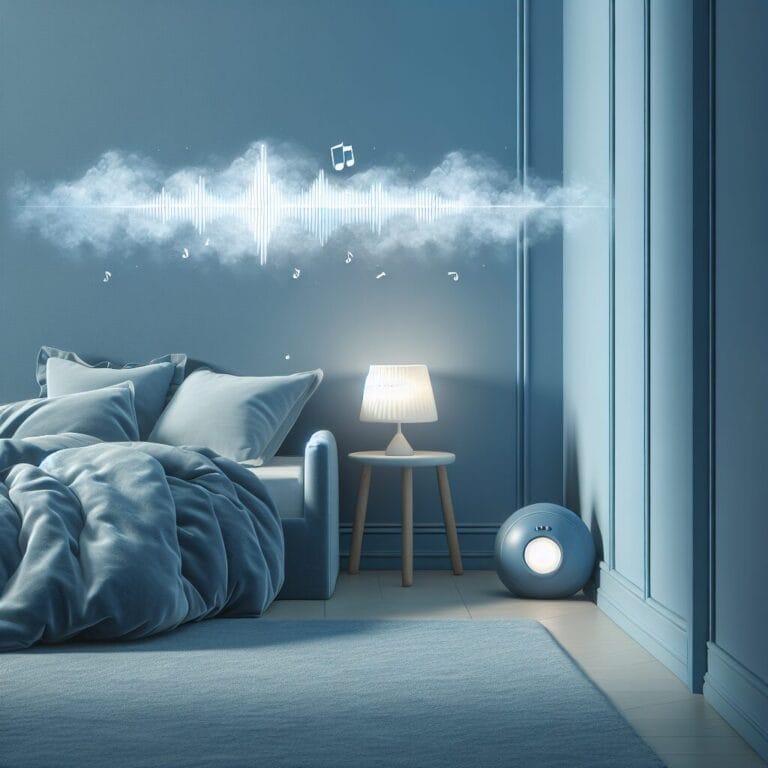
5 Sleep Optimization Tips for Toddlers: Ensuring Restful Nights for Your Little Ones
Table of Contents
- Introduction
- Establishing a Consistent Sleep Schedule
- Creating a Conducive Sleep Environment
- Implementing a Pre-Sleep Routine
- Addressing Nutritional Factors
- Managing Sleep Disturbances
- Conclusion
- Frequently Asked Questions
Introduction
Did you know that a child’s bedroom can be a magical sleep sanctuary with just a little bit of fairy dust and some practical tips? A good night’s sleep is like gold for child development, yet pesky sleep problems, such as the dreaded sleep apnea or other sleep disorders, can make bedtime feel more like a nightmare than a dream. Picture this: your toddler’s room—a cozy haven where every element invites them to fall asleep peacefully. Yes, it’s possible!
Transforming that energetic toddler bed into a snooze-friendly retreat starts with understanding that everything from wall color to bedding contributes to your tot’s mental health and rest quality. Soft blues and calming greens might just be the ticket to whisk them off to dreamland without a fuss. And when it comes to their mattress and pillows? Think clouds—nothing too soft or too hard, but just right to support their little bodies.
Now let’s talk about those all-important bedtime routines! They’re not just rituals; they’re the secret ingredients for avoiding poor sleep. Establishing regular go-to-bed and wake-up times creates an internal clock for your munchkin so their body knows when it’s time to get sleepy. Couple that with winding-down activities—perhaps a bath followed by storytime—and you’ll have crafted a powerful signal to their brain that the land of nod is near.
And fear not, while nightmares might occasionally disrupt your little one’s slumber, creating a secure space filled with familiar comforts can fend off those unwelcome monsters under the bed. Employ nightlights or comforting music if darkness seems daunting for your tiny dreamer.
Lastly, never underestimate the power of white noise or gentle sounds which can work wonders for toddlers struggling with sensory sensitivities. In short, optimizing toddler sleep isn’t about hoping for silent nights—it’s about designing them meticulously with love, care, and savvy strategies tailored to your child’s unique needs!

Establishing a Consistent Sleep Schedule
Did you know that a rhythmic sleep routine can work like a charm, with benefits for your tot stretching far beyond just avoiding the grumps after a bad night’s sleep? It’s true! When your little one slips into a snooze groove, their body clocks adjust to this pattern, leading to improved alertness during the day and promoting stellar child development. These benefits aren’t just sprinkles on top; they’re crucial ingredients for nurturing robust mental health in kids.
Crafting an expert-approved bedtime routine isn’t rocket science, but it does require consistency from caped-hero parents like you. Start by setting a specific time for lights-out and stick to it like glue – even on weekends. Next up, make sure activities before bedtime are calming and fun. Think low-energy games, puzzles, or perhaps some quiet time with their favorite books. This not only turns bedtime into ‘best time’ but also signals their brain that the sandman is en route.
But hang on—what if your adventure-loving toddler turns bedtime into mission impossible? Well, patience is key as you navigate this common sleep problem. Keep calm and stay the course. A warm bath followed by cuddles can soothe even the most resistant sleepyheads towards dreamland.
Remember those times when you’d love just five more minutes of peace in bed? Guess what – giving your kiddo that option as part of their morning routine can prevent poor sleep from sabotaging their day. Allow them to wake up gradually with soft music or gentle back rubs instead of jarring alarms.
Now let’s tackle the elephant in the room – unexpected middle-of-the-night parties courtesy of your toddler bed escapee! Here’s where that consistent bedtime routine becomes your superhero sidekick, making these nocturnal escapades less appealing by instilling a sense of security and predictability in your child’s mind.
So there you have it; with these sleep tips tucked under your belt and a sprinkle of persistence, transforming chaotic nights into good night’s sleep episodes becomes less fairy tale and more reality. And remember, while every child is unique with their own quirks—especially when facing sleep disorders such as sleep apnea—a steady bedtime routine could be just what Doctor Sleep recommends for happier zzz’s!
Creating a Conducive Sleep Environment
Let’s untangle the often overlooked, yet utterly crucial elements that turn your child’s bedroom into a tranquil sleep haven. Picture this: after a day filled with tiny adventures, your toddler tiptoes into a room where the air smells just right—thanks to an unassuming diffuser emitting soothing lavender or chamomile scents—and the temperature is cool, beckoning them towards their cozy toddler bed. It’s these subtle tweaks in their environment that can profoundly influence how quickly they fall asleep and stay asleep.
Now, imagine the walls of this sanctuary adorned with serene colors that whisper ‘relax,’ rather than screaming bright tones that shout ‘playtime!’ Yes, color psychology plays an ace role in nudging your tot towards slumber land. And when it comes to mattresses and blankets? Opt for breathable materials that keep sweat at bay because nobody likes waking up sticky and bothered.
But wait, there’s more! Blackout curtains are unsung heroes in smoothing out child sleep patterns. They block intrusive streetlights and early sun rays from cutting sleep short—because we all know how precious every minute of shut-eye is for both toddlers and parents alike. Pair those curtains with white noise machines that mimic the whoosh of a womb or simply drizzle rain sounds; these background symphonies can help mask disruptive noises and cocoon your little one in calmness.
And don’t forget about mobility within the room! Ensure cords are tucked away and furniture is secured because nothing sabotages good night’s sleep like worry over safety hazards lurking in what should be the safest place for them.
So there you have it—a blueprint for crafting a snooze-fest worthy room for your mini-me. These optimizations aren’t just fluffy extras; they’re backed by science as pillars supporting robust mental health reminders stitched into their dreams each night. With each element tailored to address potential sleep problems—from combating elusive sandmen due to sleep disorders like sleep apnea to averting poor sleep driven by sensory sensitivities—you’re gifting more than sweet dreams; you’re nurturing pivotal child development milestones one good night’s sleep at a time.
Implementing a Pre-Sleep Routine
Little do we realize that the secret potion for ensuring our toddlers fall into a deep, restorative slumber isn’t found in a storybook—it’s crafted through nurturing bedtime rituals. These sacred nightly routines are more than just traditions; they’re psychological cues telling those busy little bodies that it’s time to wind down, slow their engines, and prepare for a good night’s sleep. By incorporating activities like a warm bath with bubbles that giggle away the day’s play or a soothing massage with gentle oils, you’re setting the stage for your child to drift off into dreamland effortlessly.
But amidst the storybooks and cuddly toys in your toddler bed arsenal lies an unsuspecting villain—screen time. Yes, tablets and televisions emit blue light which acts like a signal flare to young brains, keeping them alert when they should be unwinding. Limiting this electronic exposure at least an hour before bed is crucial as it helps regulate their natural sleep-wake cycles—a big win for combating common sleep disorders such as sleep apnea or garden-variety sleep problems.
Let’s not forget that reading aloud from their favorite book can weave magic stronger than any lullaby. The rhythm of your voice is a familiar comfort that gently guides them towards relaxation and eventually sends them sailing on their sleepy voyage. And why not sprinkle some creativity into these moments? Perhaps invent tales where characters conquer adventures by settling down in their cozy beds—an artful way to make hitting the hay seem utterly heroic!
Now imagine transforming this pre-sleep scenario even further by dimming lights early in the evening, further reinforcing their internal clock that whispers “it’s nearly bedtime.” This gradual change works wonders alongside those relaxing activities and snuggle sessions on the toddler bed, nudging your little one towards irresistible drowsiness.
These thoughtful steps in optimizing toddler sleep routines aren’t just about avoiding poor sleep; they support vital aspects of child development and mental health. So as you finesse these nighttime practices tailored just right for your unique tot, remember—you’re doing more than coaxing soft snores; you’re fostering foundations for happy tomorrows filled with bright-eyed discoveries after each invigorating good night’s sleep.
Addressing Nutritional Factors
A well-balanced diet, rich in the right foods, can be an unsung hero in your toddler’s quest for a good night’s sleep. You might not think about dinner when tucking your little one into their toddler bed, but what they munch on before bedtime could be quietly conspiring against peaceful slumber. Some foods contain sneaky stimulants that kick child sleep problems into high gear; for instance, chocolate treats are cozy delights, but they hide caffeine which can keep those tiny eyes wide open when they should be closed.
Parents often wonder about the ideal dinner for tiny tummies so close to dreamtime. The answer? Think light and early—serving a nutritious meal a few hours before the bedtime routine begins helps ensure your tot isn’t wrestling with a full or grumbling belly under the covers. Foods that are heavy and hard to digest can lead to poor sleep as your child tosses and turns instead of drifting off into restorative rest.
Navigating food choices isn’t just about dodging potential disruptions; it’s also an opportunity to positively impact child development and mental health through nutrition. Complex carbohydrates paired with lean proteins make excellent pre-sleep dining options—they help promote steady blood sugar levels throughout the night. A small bowl of oatmeal with sliced bananas or whole-grain toast topped with turkey deliver comfort without causing chaos at lights out.
Steering clear of sugary snacks and fizzy drinks late in the day is another key tactic. Not only do these culprits cause energy spikes (and subsequent crashes), but they’re also likely to produce nighttime awakenings or even contribute to conditions like sleep apnea—a particular concern in toddlers’ developing bodies.
Here’s something else worth chewing over: consider introducing cherries, kiwis, and nuts into afternoon snacks as these goodies naturally boost melatonin—the body’s sleep-inducing hormone. With this kind of dietary finesse, you’re not just setting up for immediate snooze success; you’re laying down lifelong habits for robust health.
So next time you plan your grocery run, remember that filling up your cart goes hand-in-hand with filling up those sleepy-time reserves—because every wise food choice brings you one step closer to hearing those sweet sighs of deep sleep from your toddler’s bedroom each starry night.

Managing Sleep Disturbances
Navigating the nighttime labyrinth of toddler sleep can feel like plotting a course through uncharted waters, where sudden wakings often rock the boat. Fear not, for with a dash of savvy and sprinkling of patience, those choppy seas can be calmed. Let’s cast a light on common culprits behind those midnight wake-up calls: teething pain, thirst, or even a too-quiet room that makes little ears perk up at the slightest sound. Plush pals in their toddler bed might comfort some tots, but others may need a sippy cup of water placed within reach to quench night-time thirst without summoning mom or dad.
Now imagine your little one’s sleepy gaze in the wee hours—what’s your game plan? Gentle back rubs and hushed lullabies could coax them back to dreamland. Or perhaps it’s as simple as tucking their favorite blankie around them and turning on a soft-glow nightlight to fend off any shadowy fears. Sometimes all they need is assurance that you’re there—that their world is safe—so they can drift off again.
But what if counting sheep turns into counting wide-eyed ceiling stares? This is when you might consider calling in reinforcements. Persistent sleep disturbances such as frequent awakenings, loud snoring, or gasping (potential signs of sleep apnea) are red flags; they signal that something more than just routine sleep problems may be at play. In these cases, seeking advice from pediatric sleep specialists could illuminate hidden health issues affecting your child’s slumber.
Remember that every sleepless night has its dawn—a solution waiting just beyond the horizon. Whether it’s tweaking bedtime habits or enlisting expert guidance for deeper issues, navigating the nocturnal nuances of toddlerhood ensures not only good nights’ sleep but also paves the way for sunny mornings brimming with smiles and energy ready to tackle new adventures in child development and mental health. With each small step towards serene nights, you’re not just soothing them back to rest—you’re weaving resilience and happiness into their childhood tapestry.
| Culprit | Signs | Immediate Solutions | When to Seek Professional Help | Long-Term Benefits |
|---|---|---|---|---|
| Teething Pain | Fussiness, Drooling, Chewing | Comforting back rubs, Teething toys | N/A | Improves with tooth eruption |
| Thirst | Waking up, Signaling for water | Sippy cup of water within reach | N/A | Encourages self-soothing |
| Too-quiet Room | Startling at noises | White noise machine, Soft music | N/A | Promotes sound sleeping habits |
| Loneliness or Fear | Clinginess, Crying | Favorite plush toy, Nightlight | N/A | Fosters a sense of security |
| Sleep Apnea | Snoring, Gasping, Frequent awakenings | Monitor and record symptoms | Consult pediatric sleep specialist | Addresses health issues |
| Consistent bedtime routines and creating a comfortable sleep environment are key to managing sleep disturbances. Professional help may be necessary for persistent issues. | ||||
Conclusion
Nestling your little one into their toddler bed for the night should be a serene ending to a day full of pint-sized adventures. Yet, when sleep disorders like sleep apnea or persistent sleep problems play the villain, achieving that coveted good night’s sleep feels more like a distant dream. Here’s where equipping yourself with ninja-like sleep tips becomes essential—not just for immediate rest but as golden keys to unlock ongoing child development and mental health triumphs.
Let’s sprinkle some magic dust on what we’ve learned so far: creating that cozy child’s bedroom is only part of the sleep success story. Consistency in bedtime routines acts like a comforting lullaby for your tot’s internal clock, telling them it’s time to fall asleep without fussing. But it isn’t just about what happens at sundown; nutrition plays its supporting role too! A dinner menu light on tummy troublemakers can steer clear of poor sleep pitfalls, ensuring they aren’t too full or hungry when their head hits the pillow.
As you embark on this journey toward serene slumbers, patience will be your guiding star. Not every strategy will yield instant results—it’s the steady application of these love-laden routines that plant seeds for lasting benefits. As parents, you become artisans of restful realms where toddlers recharge from head to toe, laying down vibrant tracks for tomorrow’s learning and growth.
In wrapping up our quest through the land of Zzzs, remember that although nocturnal awakenings might test your resolve at times, they’re also opportunities to strengthen that snug blanket of security around your child. Each peaceful night weaves another layer into their overall well-being tapestry—brightening eyes and sharpening minds ready to explore new horizons.
So as heads nestle into pillows tonight in homes across town, bear in mind this vision: each thoughtfully crafted routine not only paves the way towards dreamland but builds foundations firm with happy memories and robust health—for sleepy-time stories today are blueprints for radiant tomorrows.



